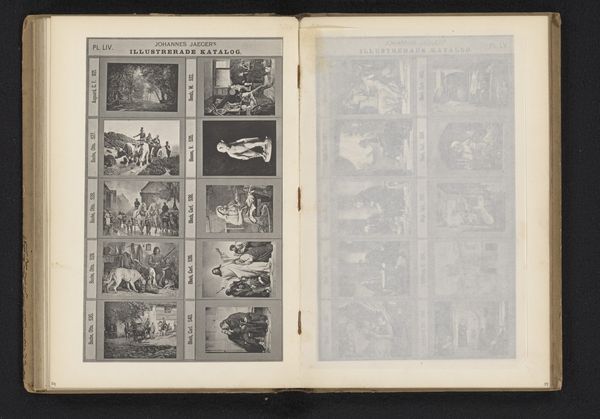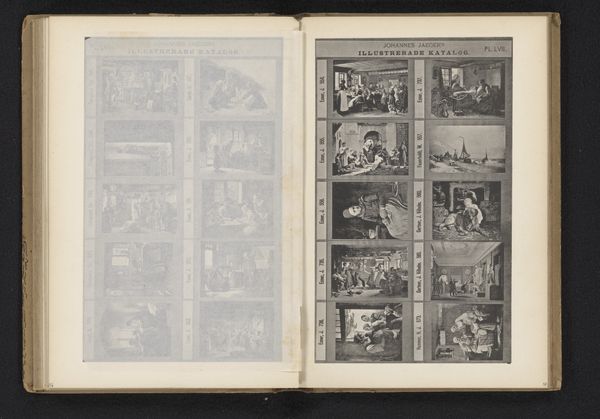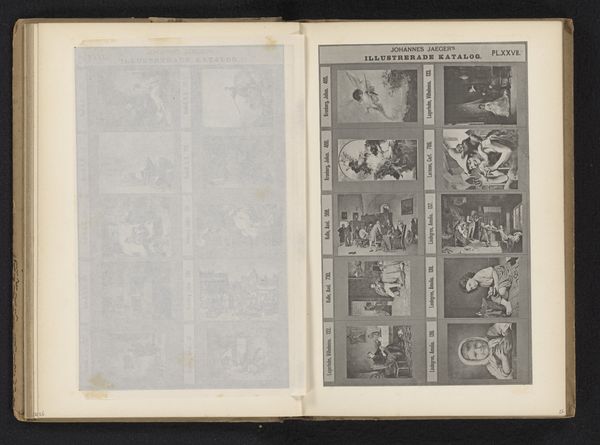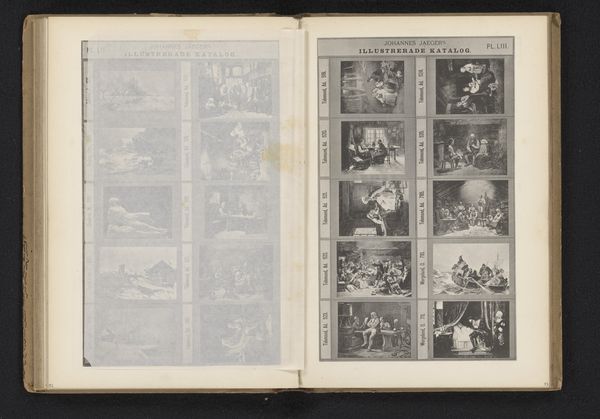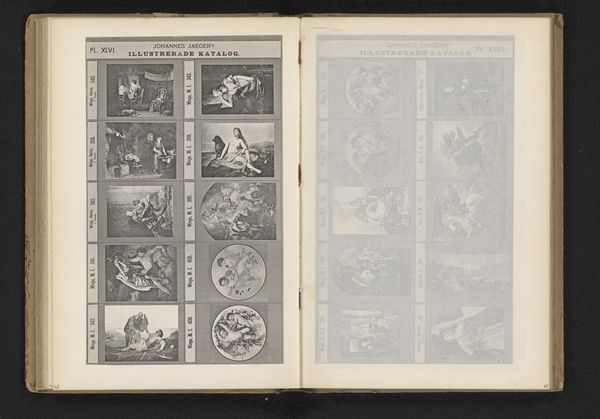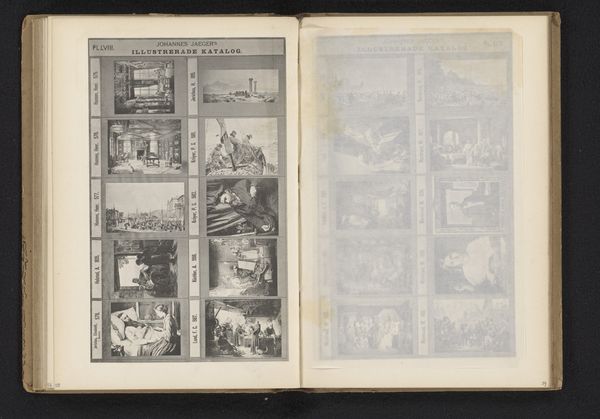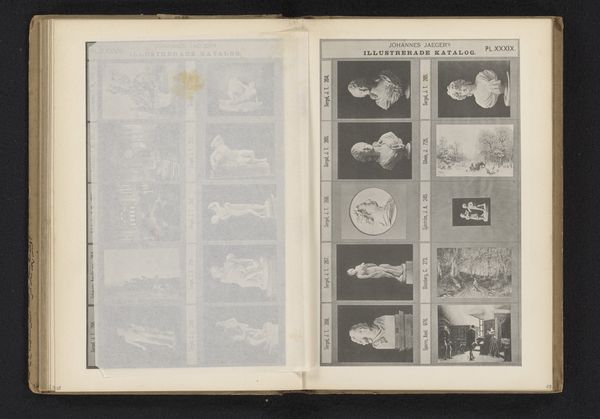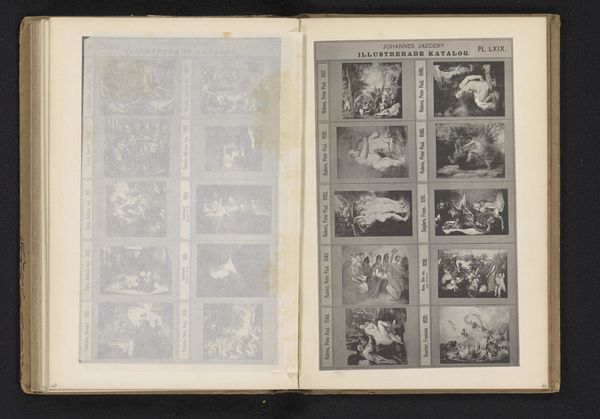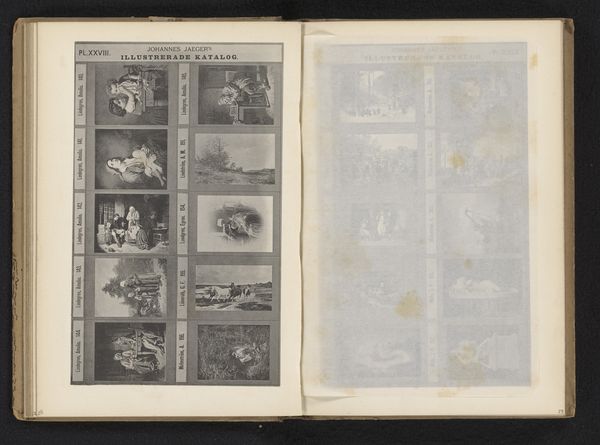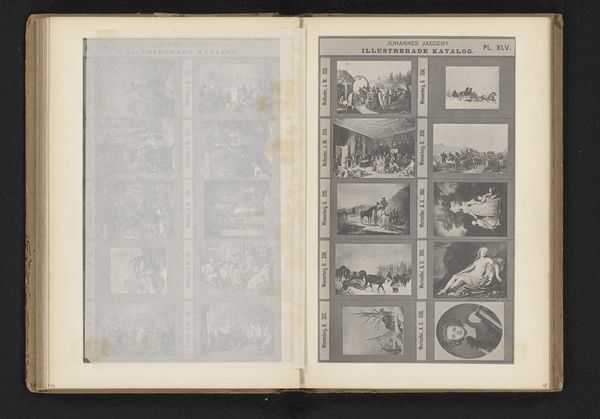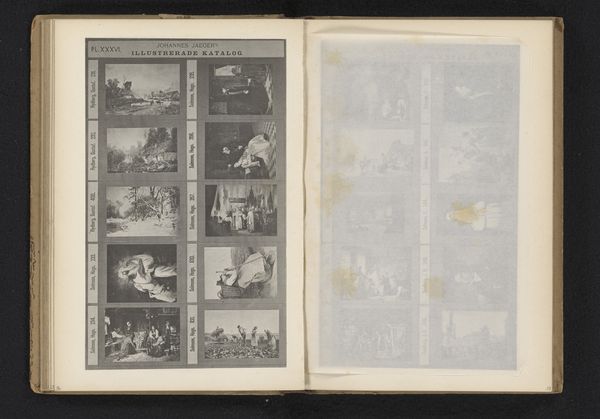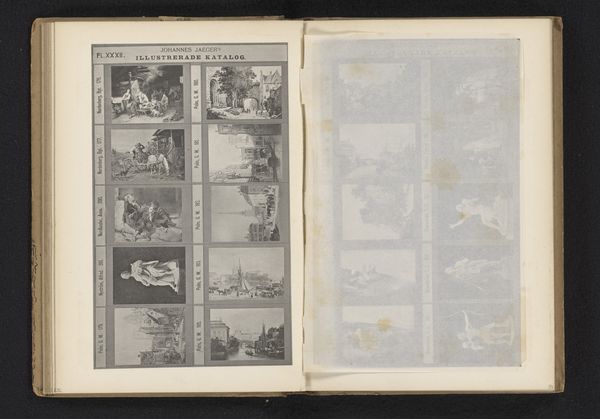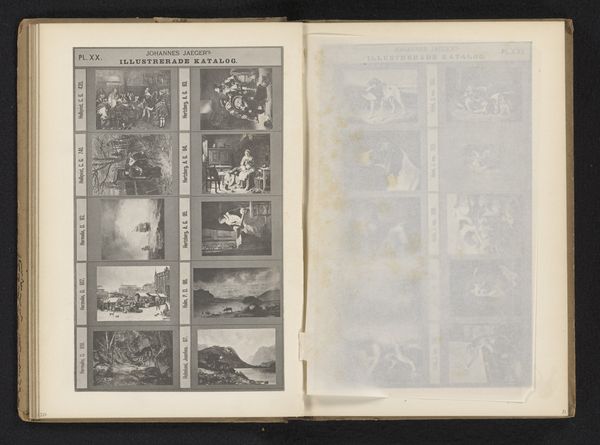
Fotoreproductie van tien schilderijen, prenten en mogelijk foto's c. 1872 - 1882
0:00
0:00
lithograph, print, etching, photography
#
16_19th-century
#
lithograph
# print
#
etching
#
photography
#
genre-painting
#
history-painting
#
academic-art
Dimensions: height 181 mm, width 110 mm
Copyright: Rijks Museum: Open Domain
Curator: Here we have a photomechanical reproduction of ten images after paintings, prints, and possibly photographs. It dates to the late 19th century, likely created between 1872 and 1882. Editor: It presents a somewhat clinical catalog of styles. I'm immediately drawn to the play of light and shadow within each tiny square, though, a micro-study in pictorial techniques. Curator: Indeed. These kinds of reproduction catalogs served a vital role in the circulation of imagery during this era, democratizing access, especially for marginalized communities that often had restrictions in museum accessibility. Consider how a rural schoolteacher, or a woman barred from advanced academic circles, could expand their art historical knowledge. Editor: From a purely formal standpoint, the stark contrast of the images themselves against the off-white pages offers an interesting duality: high art reduced to the uniform texture of mass reproduction. Curator: Absolutely. We might consider this item in relationship to the broader discourse on reproduction and authenticity—how are we to position high and low brow notions of art? Were institutions or patrons challenged to reckon with how such democratization would impact or influence social mores, or their own standing within those societal confines? Editor: Notice how the arrangement itself implies a visual logic. Landscape next to portraiture, followed by a narrative scene—almost like a compressed exhibition within a book. Curator: It speaks volumes about the era's urge to classify, organize, and master information through accessible, even if rudimentary, technology. One could analyze these juxtapositions with an eye toward art and class struggles of the time, examining how power sought to maintain and replicate itself. Editor: True. And it begs a further inquiry into the selection process; what narratives did these curated groupings subtly convey? Curator: I’ll carry these themes with me now. Thank you. Editor: And I, a renewed appreciation for the nuance of greyscale!
Comments
No comments
Be the first to comment and join the conversation on the ultimate creative platform.
